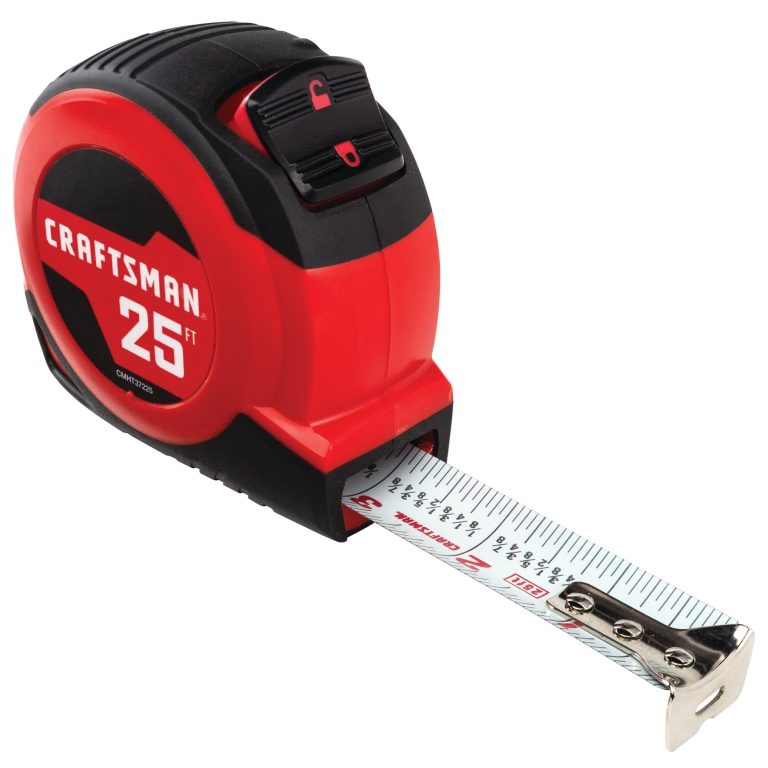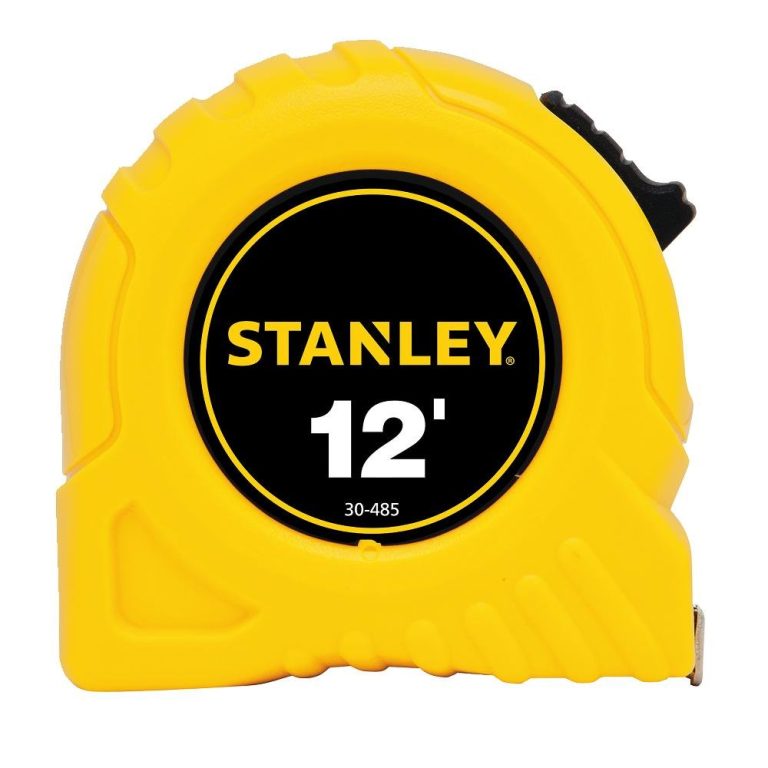
Tape Measure Inches: Reading, Types, and Tips for Measurements
When it comes to precision in measurements, a tape measure inches stands out as an indispensable tool for professionals and DIY enthusiasts alike. Whether you’re embarking on a construction project, sewing a garment, or simply hanging pictures at home, understanding how to effectively use a tape measure in inches can make all the difference. This comprehensive guide delves into the various aspects of tape measures, ensuring you have the knowledge to select, use, and maintain the best tape measure inches for your needs.
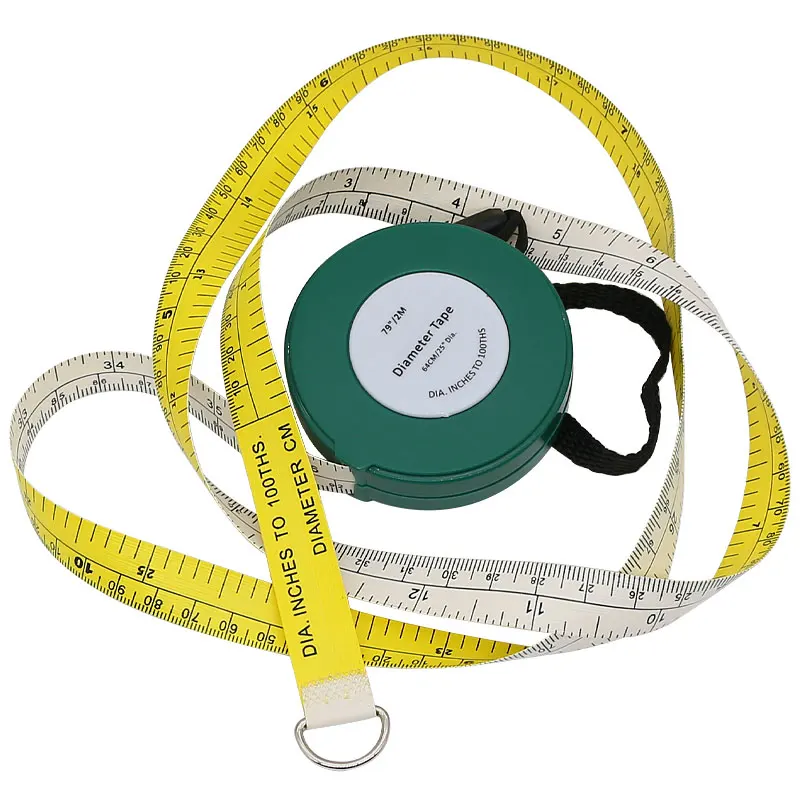 Understanding the Basics
Understanding the Basics
What is a Tape Measure?
A tape measure is a flexible ruler used to measure size or distance. Typically made of a long, thin strip of metal or fiberglass coated with plastic, a tape measure inches variant specifically caters to those who prefer or require measurements in inches rather than the metric system.
Why Choose Inches Over Metric?
Inches are commonly used in the United States, Canada, and the United Kingdom, especially in construction, tailoring, and other trades. Choosing a tape measure that measures in inches ensures compatibility with existing standards and tools, facilitating seamless work processes.
The Evolution of Tape Measure Inches
Historically, tape measures have evolved from rigid rulers to flexible tools that can extend over significant distances. This evolution has made tape measure inches more versatile, allowing for accurate measurements in various applications, from small crafts to large-scale construction projects.
Types of Tape Measures Inches
Steel Tape Measures
Steel tapes are the most common type of tape measure inches. They are durable, resistant to stretching, and can withstand rough handling, making them ideal for construction and heavy-duty use. Additionally, steel tapes often include a hook at the end for secure anchoring.
Fiberglass Tape Measures
Fiberglass tapes offer greater flexibility than steel tapes, which is beneficial for measuring curved surfaces or in environments where durability against corrosion is essential. They are lightweight and often come with bright, easy-to-read markings, enhancing visibility and ease of use.
Cloth Tape Measures
Cloth tapes are primarily used in tailoring and sewing. These tapes are soft, flexible, and easily retractable, allowing for smooth measurements around the contours of the body or fabric. Their markings are usually printed in both inches and centimeters, catering to a broader range of users.
Digital Tape Measures
Modern advancements have led to the creation of digital tape measure inches, which incorporate electronic features such as digital displays, memory functions, and even Bluetooth connectivity. These innovations provide increased accuracy and convenience, especially for repetitive tasks or complex measurements.
 Key Features to Consider
Key Features to Consider
Length and Capacity
Tape measures inches come in various lengths, typically ranging from 12 feet to 100 feet. The choice of length depends on the nature of your projects. For household tasks, a 25-foot tape measure might suffice, whereas construction professionals might prefer a 100-foot model for large-scale projects.
Blade Width and Durability
The blade width affects the tape’s durability and ease of reading. A wider blade typically offers greater durability and visibility, while a narrower blade allows for more precise measurements. Additionally, reinforced edges and a coated surface can enhance the tape’s longevity.
Locking Mechanism
A reliable locking mechanism is crucial for maintaining measurement accuracy. Tape measures inches with a strong lock ensure the tape stays in place during measurements, preventing accidental slips that could lead to errors.
Hook Design
The hook at the end of the tape measure inches plays a significant role in securing measurements. End hooks made of metal provide better durability and flexibility, allowing for accurate measurements even when hooking onto objects.
Visibility of Markings
Clear, easy-to-read markings are essential for precise measurements. Tape measures inches with contrasting colors for the markings, as well as large numerals, enhance visibility and reduce the likelihood of errors.
How to Read a Tape Measure Inches Accurately
Understanding the Markings
A tape measure inches typically features both imperial (inches and feet) and metric (centimeters and meters) markings. Focus on the inch side for projects requiring measurements in inches. The numbers indicate whole inches, while the smaller lines represent fractions of an inch.
Counting the Fractions
Each inch is divided into smaller fractions, commonly halves, quarters, eighths, and sixteenths. For example, a line halfway between two inch marks represents a half-inch, while lines closer to the inch marks may represent smaller fractions.
Using the Hook Technique
The metal hook at the end of the tape measure inches can be used to lock the tape in place. To measure accurately, hook the end onto the starting point, ensuring it remains fixed as you extend the tape to the desired length.
Measuring from Different Points
For internal measurements, such as the width of a window frame, start the measurement from the inside of one edge to the inside of the opposite edge. For external measurements, start from the outside edge to capture the total span.
Tips and Tricks for Accurate Measuring
Keep the Tape Straight
Ensure the tape measure inches remains straight and taut during measurement to prevent bending or sagging, which can lead to inaccurate readings.
Double-Check Measurements
Always double-check your measurements by measuring twice. This practice helps catch any errors and ensures the highest level of accuracy.
Use the Right Tool for the Job
Choose a tape measure inches that matches the specific needs of your project. For instance, a longer tape is unnecessary for small crafts, while a sturdy, long tape is essential for construction work.
Practice Regularly
Like any skill, accurate measuring improves with practice. Regularly use the tape measure inches to become more familiar with its markings and features.
Store Properly
After use, retract the tape measure inches fully and store it in a dry, safe place. Proper storage prevents damage to the blade and ensures longevity.
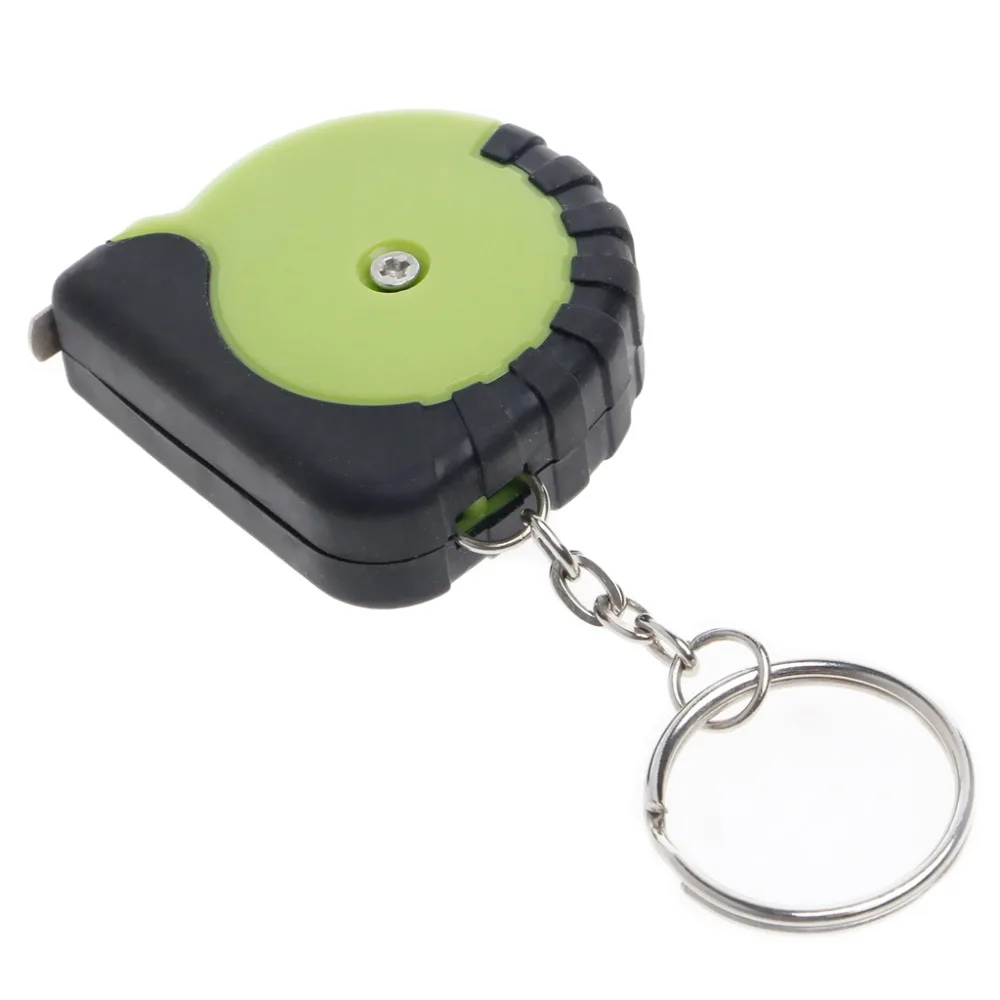 Comparing Tape Measure Inches to Metric Tape Measures
Comparing Tape Measure Inches to Metric Tape Measures
Measurement System Familiarity
While tape measure inches are prevalent in certain regions, metric tape measures are standard in others. The key difference lies in the measurement system—imperial versus metric—which influences user preference based on familiarity and project requirements.
Precision and Usage
Metric tape measures provide decimal-based precision, which can be advantageous for scientific and engineering applications. Conversely, tape measure inches offer practicality and familiarity for everyday use in regions that primarily use the imperial system.
Dual-Scale Tape Measures
Many modern tape measures include both imperial and metric markings, allowing users to switch between systems as needed. This versatility makes dual-scale tape measure inches a popular choice for those who work across different measurement standards.
Maintenance and Care
Cleaning the Tape
Regularly clean your tape measure inches to remove dirt and debris that can obscure markings or interfere with the tape’s retraction. Use a damp cloth to wipe the tape, ensuring it remains free from buildup.
Lubricating the Blade
Occasionally lubricate the tape measure inches’ blade and mechanics to maintain smooth operation. A light application of oil can prevent rust and ensure the tape retracts efficiently.
Inspecting for Damage
Regularly inspect the tape measure for signs of wear and tear, such as frayed edges, bent hooks, or damaged markings. Addressing these issues promptly extends the tool’s lifespan and maintains its accuracy.
Proper Storage
Store the tape measure in a cool, dry place away from direct sunlight. Avoid dropping or twisting the tape, as this can cause internal damage and affect its functionality.
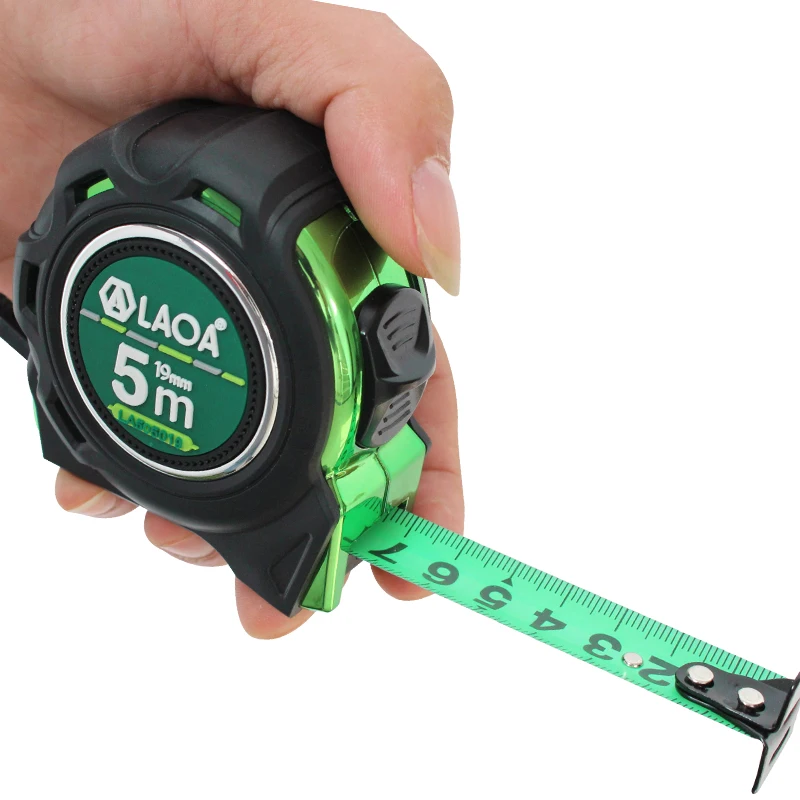 Innovative Features
Innovative Features
Magnetic Hooks
Some tape measures come with magnetic hooks, which provide a firmer hold when measuring around metal objects. This feature enhances convenience, especially in construction settings where metal beams and structures are common.
LED Lighting
Integrated LED lights illuminate the measurement area, making it easier to read markings in low-light conditions. This innovation is particularly useful for intricate tasks or when working in dark environments.
Digital Displays
Digital tape measures offer digital readouts of measurements, eliminating the need to interpret markings manually. These models often include additional features like area and volume calculations, enhancing their utility.
Self-Locking Mechanisms
Advanced self-locking mechanisms ensure the tape remains extended without manual locking, offering hands-free measuring and increased ease of use.
Applications in Various Fields
Construction and Carpentry
In construction and carpentry, tape measure inches are essential for measuring lengths, widths, and heights of structures. Their durability and precision ensure that measurements are accurate, contributing to the structural integrity of buildings and installations.
Sewing and Tailoring
Sewers and tailors rely on tape measure to measure fabric and body dimensions accurately. The flexibility and ease of use of cloth tape measures make them ideal for creating custom-fit garments and intricate designs.
Home Improvement Projects
From painting rooms to installing shelves, tape measure inches are a go-to tool for numerous home improvement tasks. They help homeowners achieve precise measurements, ensuring projects are completed correctly and efficiently.
Automotive Repairs
Mechanics use tape measure to measure components and parts of vehicles. Accurate measurements are crucial for diagnosing issues, ordering replacement parts, and ensuring proper assembly during repairs.
Sports and Fitness
In sports, tape measures inches are used to measure equipment dimensions, track athlete progress, and ensure standardization in equipment sizes for fair competition.
Choosing the Right Tape Measure for Your Needs
Assessing Your Requirements
Begin by evaluating the specific needs of your projects. Consider factors such as the typical measurement range, the environment in which you’ll be working, and the level of precision required.
Budget Considerations
Tape measure inches are available at various price points. Determine your budget and seek a tape measure that offers the best balance of features and quality within your price range.
Brand Reputation
Opt for tape measure inches from reputable brands known for their quality and reliability. Trusted brands often provide better customer support and warranties, ensuring long-term satisfaction.
User Reviews and Recommendations
Research user reviews and seek recommendations from professionals or peers. Real-world feedback can provide valuable insights into a tape measure’s performance and durability.
Testing Before Buying
If possible, test the tape measure in-store to assess its feel, flexibility, and ease of use. Physical handling can reveal aspects not evident from product descriptions or reviews.
Common Mistakes to Avoid
Not Keeping the Tape Straight
Allowing the tape to bend or sag can result in inaccurate measurements. Always guide the tape to remain straight and taut during use.
Measuring from the Wrong Point
Ensure you are measuring from the correct starting point. Confusion between internal and external measurements can lead to errors in the final results.
Ignoring Kerf Adjustment
The kerf—the thickness of the tape measure hook—affects measurement accuracy, especially in precise projects. Adjust for the kerf by understanding how it influences your measurements.
Relying Solely on the Tape
While tape measure inches are accurate, double-checking with other measuring tools, such as rulers or digital meters, can enhance precision, especially in critical applications.
Overlooking Maintenance
Neglecting regular maintenance can impair the tape’s functionality and accuracy. Ensure you clean, lubricate, and inspect your tape measure inches regularly to keep it in optimal condition.
Enhancing Productivity
Quick Measurement Techniques
Developing efficient measurement techniques can save time and improve productivity. Practice extending and retracting the tape quickly while maintaining accuracy.
Utilizing Multi-Function Features
Take advantage of the additional features available in modern tape measure inches, such as built-in calculators or level indicators, to streamline your workflow and enhance functionality.
Organizing Your Tools
Keep your tape measure inches organized with tool belts or storage solutions. Easy access to your measuring tool reduces downtime and ensures readiness for any task.
Integrating Technology
Combine traditional tape measure inches with digital tools, such as smartphones or tablets, to record and manage measurements more effectively, especially in large projects.
 The Future of Tape Measure Inches
The Future of Tape Measure Inches
Smart Tape Measures
The integration of smart technology into tape measure is on the rise. Features like wireless connectivity, automatic data logging, and integration with project management software are set to revolutionize the way measurements are taken and recorded.
Sustainable Materials
As sustainability becomes a priority, manufacturers are exploring eco-friendly materials for tape measure. Biodegradable coatings and recyclable components are being developed to reduce environmental impact.
Enhanced Durability
Future tape measure will likely feature improved materials and construction techniques, making them even more durable and resistant to wear and tear in demanding environments.
Advanced Measurement Capabilities
Innovations in measurement technology will continue to enhance the precision and functionality of tape measure. Features such as laser-guided measurements and smart calibration are expected to become more prevalent.
Conclusion
In summary, a tape measure inches is a versatile and essential tool for a wide range of applications. By understanding the different types, key features, and effective usage techniques, you can select the best tape measure inches to meet your specific needs. Moreover, maintaining your tape measure and avoiding common mistakes ensures long-lasting accuracy and reliability. As technology advances, the capabilities of tape measure inches will continue to expand, offering even greater precision and convenience. Investing in a high-quality tape measure inches not only enhances your productivity but also contributes to the success of your projects, whether they are professional endeavors or personal DIY tasks.
